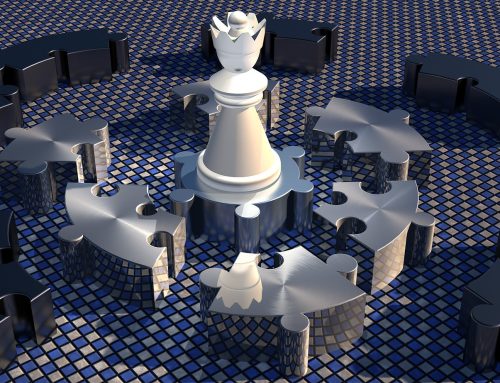Was Sie über 3D-Renderings wissen sollten.
3D Rendering ist eine der am schnell wachsenden Branchen der Welt. In dem folgenden Beitrag bieten wir ihnen einen kurzen Einblick in das Innenleben dieser Branche und warum sie für die Zukunft der Technologie wichtig ist.

Wenn wir die Entwicklung der Kunst im Laufe der Menschheitsgeschichte relativ betrachten, ist 3D-Rendering und Visualisierung nur ein winziger Punkt auf einem Spektrum, das von primitiven Höhlenzeichungen bis hin zu computergestützten Meisterwerken in Skulptur und Architektur reicht. Erst in den letzten drei Jahrzehnten ist die Technologie für das 3D-Rendering weit genug fortgeschritten, um Künstlern die notwendigen Werkzeuge an die Hand zu geben, um nahtlos mit dem Medium zu arbeiten. Die Branche hat die Zuschauer mit Bildern und Animationen verwirrt, die den Unglauben ebenso aufheben wie Ehrfurcht erregen.
Aber 3D-Rendering ist viel mehr als nur ein neuer Ausdruck der bildenden Kunst – es ist der Motor, der unzählige Industrien antreibt, denn es ermöglicht uns, in das Innenleben von Systemen – sowohl natürlich als auch von Menschenhand – einzusehen, um besser zu verstehen, wie unsere Welt funktioniert. Es ist eine technologische Evolution, die Innovation, Unterhaltung, Kommunikation und relatives Denken hervorgebracht hat. Dieser Artikel soll aufzeigen, was 3D-Rendering ist, wie es angewendet wird und warum es für den zukünftigen technologischen Fortschritt so wichtig ist.
Was sind 3D Renderings?
Im Grunde genommen ist das 3D-Rendering eine zweidimensionale Darstellung eines Computer Wireframe Modells, dem Eigenschaften wie Textur, Farbe und Material zugewiesen wurden. Sie sehen täglich 3D-Renderings, aber die meiste Zeit merken Sie es wahrscheinlich gar nicht. Natürlich gibt es Medieninhalte wie z.B. Toy Story, dass sofor als irreal dechiffriert werden kann. Aber Sie würden sich wahrscheinlich wundern, wenn Sie erfahren würden, dass die meisten Produktwerbungen zumindest bis zu einem gewissen Grad durch den Einsatz von 3D-Rendering-Visualisierungen entstanden sind. Digitale 3D-Kunstwerke finden Sie in ihren Zeitschriften, auf ihrem Fernseher, auf den Umschlägen ihrer Bücher und fast überall sonst in Print- und Bildschirmmedien. Das Medium hat sich schnell zur allgegenwärtigen Form der Kunst und des künstlerischen Ausdrucks entwickelt – und das geschah, ohne dass es jemandem wirklich bewusst wurde.
Die Anatomie eines 3D-Renderings.
Jede 3D-Visualisierung wird mit zwei primären Software-Säulen erstellt: Modellierer und Renderer.
Jede Darstellung beginnt als 3D-Modell, das durch eine Reihe von flachen geometrischen Formen dargestellt wird, die im dreidimensionalen Raum miteinander verbunden sind. Diese Formen werden als Polygone bezeichnet. Diese rudimentären Geometrien sind das Rückgrat jedes digitalen 3D-Modells und werden mit Computersoftware wie Rhinoceros 3D, Google Sketchup oder 3D Max bearbeitet und erstellt.
Die Modelle selbst sind oft sehr grob, im digitalen Raum als einfaches Wireframe-Objekt oder -Szene dargestellt. Um diesen Formen eine echte Form zu geben, müssen sie in Textur Maps, künstliche Lichtquellen und eine Reihe anderer Filter eingeführt werden, die am anderen Ende herauskommen, was zu einem fertigen 3D-Rendering führt.
Neben Modellierungs- und Rendering-Programmen gibt es auch Postproduction-Software wie Photoshop, die jedem Werk den letzten ästhetischen Schliff verleiht, der notwendig ist, damit ein Rendering unglaublich lebensecht ist. 3D-Rendering-Designer müssen mit einer Vielzahl von Softwaretypen vertraut sein, um Visualisierungen von höchster Qualität zu erstellen. Sie sind eine einzigartige Gruppe von Designern, Ingenieuren und verrückten Wissenschaftlern, die mit Einsen und Nullen experimentieren, um das Beste aus der derzeit verfügbaren Technologie zur Produktion ihrer Arbeiten herauszuholen.
Flugzeug-Cockpits und die Geburt des 3D-Renderings.
Neben der wunderbaren Fähigkeit, 36.000 Fuß über den Wolken zu einem Ort auf halbem Weg um die Welt zu fliegen, können Flugzeuge auch mit der Konzeption des 3D-Renderings in Verbindung gebracht werden. Alles begann 1960, als ein kleines Zahnrad in der Maschine von Boeing, William Fetter, damit beauftragt wurde, die Raumausnutzung in Flugzeugcockpits zu rationalisieren. Denn wir alle wissen, wie wichtig der Mittagsraum für die Piloten ist, da der Autopilot die Passagiere sicher von Punkt A nach Punkt B gleitet. Herr Fetter hat seine Arbeit aufgenommen und am Ende seines Ergonomieexperiments hatte er eine computergenerierte orthografische Darstellung der menschlichen Form. Er nannte es eine Computergrafik und mit diesem schnellen Einfallsreichtum wurde eine ganze Branche geboren – eine, die die Art und Weise, wie wir Medien konsumieren und kommunizieren, grundlegend verändert hat.
Direkt hinter Herrn Fetter trat einer seiner Mitarbeiter, ein Dr. Ivan Sutherland, in die Fußstapfen, der dieses kleine Experiment mit der Entwicklung von SketchPad, dem weltweit ersten 3D-Modellierungsprogramm, einen Schritt weiterführte. Diese rudimentäre Software ermöglichte es einer Person, mit einem Computerbildschirm zu interagieren oder ein Bild zu erstellen. Lange bevor der Begriff Graphical User Interface (GUI) geprägt wurde, war dies die erste ihrer Art.
Anschließend begann die Reise des 3D-Renderings. Wir alle wissen, was als nächstes geschah. Computer wurden schneller, Software wurde besser und die Werkzeuge, mit denen die Menschen den digitalen 3D-Raum manipulieren würden, wurden so ausgereift, dass sie einer Entwicklung multimedialer Innovationen Platz machen würde.
3D Rendering Software.
Wie bereits erwähnt, gliedert sich die 3D-Rendering-Software in Modellierer und Renderer.
Der mächtigste – und damit am schwierigsten zu beherrschende – 3D-Modellierer ist Maya. Es handelt sich um eine komplexe Software von Autodesk, die hauptsächlich von Animationsstudios und Videoherstellern als Rückgrat ihres Weltenbaus verwendet wird. Maya hat bei weitem das robusteste Werkzeugset und verfügt sogar über eine physikalische Modellierung, die speziell für Animationsfilmer entwickelt wurde, die versuchen, reale Systeme für die genauesten und glaubwürdigsten gerenderten Szenen nachzubilden.
Für Architekten und Designer dominiert Rhinoceros 3D den Markt. Es bietet ein anderes, besser zugängliches Werkzeugset von Maya, hat aber immer noch genug unter der Haube, um Geometrien schnell und präzise zu modellieren. Eine Alternative zu Rhino ist das kostenlos herunterladbare SketchUp, das von Google vertrieben wird. Es ist der benutzerfreundlichste 3D-Modellierer der Welt und gewinnt bei Architekten als produktives Design- und Kommunikationswerkzeug schnell an Bedeutung.
Die meisten Modellierungsprogramme sind so eingerichtet, dass sie mit einer Vielzahl von Renderern zusammenarbeiten, wobei der beliebteste und leistungsfähigste VRAY ist. Es ermöglicht Ihnen, Szenen, Bilder oder Animationen mit ultrarealistischen Licht- und Schattenstreuungsalgorithmen einzurichten, die die Realität perfekt nachbilden. Alternativen zu VRAY sind Maxwell, Cinema 4D oder das Open-Source-Programm Blender 3D.
3D Renderings im Film.
Vielleicht ist die Branche, die am stärksten von dem rasanten Wachstum der 3D-Rendering-Technologie betroffen ist, das Show-Business. Das Volumen der Animationsfilme, die jedes Jahr mit Waschbären, Füchsen oder Pandabären gezeigt werden, ist erschütternd. Studios wie Pixar haben nicht nur die Trajektorie der animierten Unterhaltung verändert, sondern auch die Motion-Media-Leinwand als Ganzes.
Der Einsatz von computergenerierten Bildern (CGI) geht auf die 70er Jahre zurück, als Mainstream-Megahits wie Star Wars die Kinobesuchern mit Dingen verblüfften, die man einfach noch nie zuvor gesehen hatte. Und während George Lucas damals noch seine Filmmagie stark auf die Verwendung praktischer Effekte und die Herstellung von Maßstäben ausrichtete, brachte er diese Galaxie weit, weit weg zum Leben mit 3D-Rendering auf eine Weise, die noch nie zuvor erforscht worden war.
Andere Filmemacher folgten bald und 1993 schenkte ein Nachwuchsingenieur namens Spielberg der Welt einen nackten Jeff Goldblum und eine Vielzahl von ultrarealistischen und schrecklichen Dinosauriern im Jurassic Park. Dieser Film sieht nicht so aus, als ob dieser in den letzten 5 Jahren gemacht wurde. Jurassic Park war aber der Film, der den Maßstab bildete und auf den alle digitalen Medien gewartet hatte, bevor sie richtig durchstarteten.
Die Verschmelzung von Hearts und Minds war Pixars erster großer Streifzug ins Filmgeschäft mit einer charmanten Geschichte über einen Jungen und seine Spielzeuge in Toy Story. Buzz, Woody und die Bande bewiesen allen, dass die Tage einer Animationsindustrie, die von der zweiten Dimension beherrscht wurden, gezählt waren. Es war der erste Blockbuster, der vollständig in CGI gedreht wurde und er war auch nur zufällig einer der am meisten verehreten, geliebten Nostalgie-Reisen, die je gemacht wurden. Die Bedeutung von Toy Story kann nicht genug betont werden, denn es bedurfte eines so zugänglichen, universell verwendbaren Universums, dass sich die Menschen in das Medium verliebten.
Heute wäre es schwierig, eine neue Version zu finden, die nicht mindestens einen Hauch von digitaler Interfrezenz aufweist. Und während viele ironischerweise den unglücklichen Tod von George Lucas`Star Wars-Reise zu einer übermäßigen Nutzung von 3D-Rendering beschuldigen, hat die Entwicklung des Mediums nichts anderes als gute Dinge für die Filmindustrie getan.
Architektur und Design.
Für viele haben Architekten die glamouröse und romantische Aufgabe, massive Gebäude aus Beton und Stahl zu errichten, die den Massen Schutz bieten und daneben auch optisch etwas hermachen sollen.
Architekten und Designer stützen sich auf diese 3D-Rendering-Tools, um ihre Fähigkeiten als Designer zu präsentieren. Natürlich existieren viele Schritte, von der Idee, die beispielsweise bei Freizeitaktivitäten auf einem Taschentuch skizziert wurde, bis hin zu einem code-konformen, strukturell soliden Gebäude, wobei die Reise häufig mit der Fähigkeit des Designers beginnt, sie zu kommunizieren, und endet, bevor mit der eigentlichen Arbeit begonnen wird.
3D Renderings sind der beste Freund des Architekten. Es gibt ihnen die Möglichkeit, zu zeigen, dass sie nicht zählen. Darüber hinaus bietet die Möglichkeit, schnell ein 3D-Modell zu erstellen, dem Designer die Möglichkeit, seine eigene Art zu kritisieren. 3D-Rendering ist zu einem unverzichtbaren Designwerkzeug geworden und bietet ein integriertes System der Qualitätskontrolle, das sicherstellt, das jeder Winkel des Gebäudes genau untersucht wurde, bevor die Zeit damit verbracht wurde, herauszufinden, wie man es baut.
Im Zuge der technologischen Entwicklung haben Architektenstudios begonnen, die Virtual-Reality-Technologie (VR) in ihre Praxis zu integrieren. Dies verbessert die Fähigkeit des Architekten, seine Arbeit mit Auftraggebern und Bauherren zu kommunizieren.
VR und 3D-Renderings.
Wenn Sie das Internet im letzten Jahr genutzt haben, sind Sie zwangsläufig auf eine Geschichte oder ein Dossier über den Aufstieg der VR gestoßen. Hohe Investitionen in die VR-Technologie von Global-Player wie Google oder Facebook machen deutlich, dass VR immer mehr zum Mainstream wird. Aber natürlich erfordert die Nutzung von VR einen ganz anderen Geschmack von Rendering-Technologie. Echtzeit-Rendering oder das 3D-Rendering, das Sie in den meisten Videospielen oder anderen interaktiven digitalen Medien finden, erfordert die Hilfe von sehr leistungsfähigen Algorithmen und Prozessoren, um Erlebnisse zu erzeugen, die je nach Benutzereingabe direkt berechnen werden.
Bisher existiert das 3D-Rendering, von dem wir gesprochen haben, in Form von vordefinierten Bildern oder Algorithmen, die von Ingenieuren und Künstlern erstellt und dann vor der Ausgabe des fertigen Produkts auf Rendering eingestellt werden. Echtzeit-Rendering geschieht, während es gesehen wird und strömt aus den Speicher der Software, die Sie gerade verwenden. Diese Technologie, sie seit der Erfindung der 3D-Computergrafik parallel entwickelt wird, ist der Schlüssel zur Revolution der VR. Architekten haben damit begonnen, VR zu nutzen, um Kunden auf virtuelle Rundgänge durch ungebautes Bauwerk begleiten. Menschen, die die Erlebnisqualitäten eines Grundrisses nicht verstehen, können mit ihnen zu Begriffen kommuniziert werden, die sie leichter verstehen können.
Mit zunehmender Bedeutung von VR gewinnt auch die Weiterentwicklung und Implementierung der 3D-Rendering-Technologie an Bedeutung. Künstler werden immer versierter in der Idee, vollständig realisierte 3D-Welten zu bauen, mit denen sie interagieren können – wenn auch in rudimentärer Weise. Bis vor kurzem war es einfach zu teuer und zu zeitaufwendig, so etwas zu tun. Denken Sie darüber nach, wie lange es dauert, bis die Entwickler von Videospielen von der Konzeption bis zur Fertigstellung ein Kam benötigten und Sie werden verstehen, warum es in bestimmten Branchen so lange gedauert hat, bis sie aufgeholt haben. Aber die Zeiten ändern sich und VR macht sich auf den Weg an Orte, an denen niemand dachte, dass es enden würde.
Welche zukünftigen Entwicklungen sind zu erwarten?
Da Virtual Reality das 3D-Rendering auf absehbare Zeit beschäftigt, ist es schwierig, den nächsten Megadurchbruch in der Technologie vorherzusagen. Natürlich werden Computer schneller, Prozessoren werden kleiner und immer mehr Menschen haben Zugang zu den Werkzeugen, die sie benötigen, um ein 3D-Rendering-Designer zu sein. Es ist ein Beruf, der in Zukunft häufiger anzutreffen sein wird, wenn die Nachfrage nach guten 3D-Rendering-Arbeiten steigt. Vom Letzterem können Sie ausgehen.
Vielen Dank für ihren Besuch.


